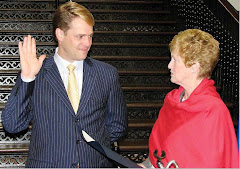Article ReminderNews: "Mayors including Vernon’s Jason McCoy, selectmen, school superintendents and emergency personnel from across the state were all in attendance, as were some business leaders from some of Connecticut’s larger employers . Several of East Hartford’s emergency services personnel were also in attendance.
The DPH’s Michael Purcaro, the Deputy Incident Commander for H1N1, acted as emcee for the event. Purcaro said the event was to update leaders on the latest information on the virus, to provide tools to deal with a resurgence of the virus, strengthen working relationships between agencies, and to assist with local planning efforts."
The plan for distribution is still being fine-tuned , but a prioritization list has been created of those most at risk, which are pregnant women, household and caregiver contacts of children age 6 months and younger, healthcare and emergency service personnel, persons aged 6 months through 24 years, and persons with a medical condition associated with higher risk of influenza complications.
Children, or more specifically, their proximity to one another in schools, are the reason this next wave of H1N1 is expected . The computed average “social distance” in a school is about one yard. In residences, the average is five yards.
State Epidemiologist Matthew Cartter said that there has not been a large outbreak in Connecticut schools yet this semester, but over the last two weeks, there has been an increase in the number of cases, which may mark the beginning of the “second wave.”
Cartter put H1N1 in the perspective of the flu outbreaks of 1918, 1957, and 1968. The 1918 virus, which was a version of H1N1 caused more deaths, 650,000, than any of the wars that occurred previously. The 1957 virus was an H2N2 virus that killed 70,000 in the U.S., and 34,000 died in 1968 from an H3N2 flu. Interestingly, people born before 1957 may have some immunity to H1N1, since they were possibly exposed to a somewhat similar virus. On average , 36,000 Americans die annually from the common flu.
Cartter said an epidemic can be likened to a hurricane in the way they are categorized. The possible upcoming wave is expected to be a “Category 2,” which would see about 12,000 hospitalizations .
Whether the vaccine is ready and distributed in time to be preventative for the most people, Cartter said, “remains to be seen.”
“In Connecticut,” he said, “we may be getting the vaccine at the same time that our doctors’ offices are seeing more sick people from H1N1.” That, he said, would make it more difficult to get the vaccine to those in the high-risk groups.
School officials across the state were told at the conference that the closing of schools is not the recommended course of action. Instead, students or teachers with flu symptoms are asked to stay at home until 24 hours after symptoms have subsided.
Information is also being distributed to school systems on how to recognize the higher severity version of the flu, and precautions if a large number of students contract the virus.
“If we’re seeing high transmissivity and high severity, you might look at strategies that the feds have supplied, such as social-distancing , moving desks apart in the classroom,” Purcaro said, adding that the possibility of moving teachers from classroom to classroom, rather than students, has also been discussed .
A meeting also took place in Vernon a couple of weeks ago, including officials from neighboring towns, on how to distribute the vaccine, once it becomes available.
For more information, visit http://www.ct./







No comments:
Post a Comment